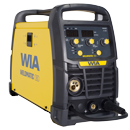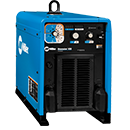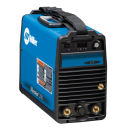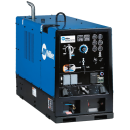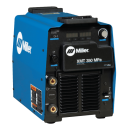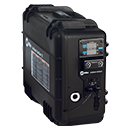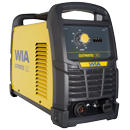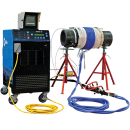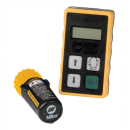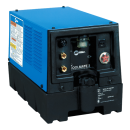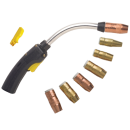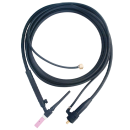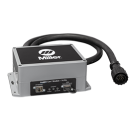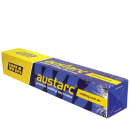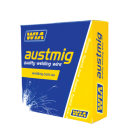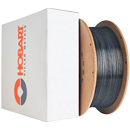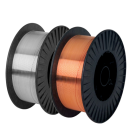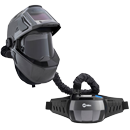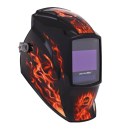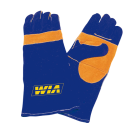Tips for Keeping MIG Gun Consumables Cleaner and Lasting Longer
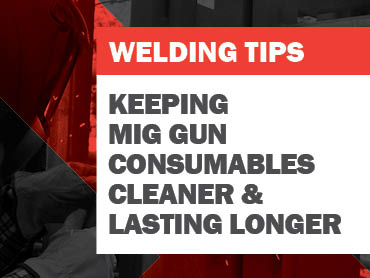
Every welder wants their consumables to last as long as possible, however operators are often changing over parts and consumables frequently. Below are some helpful tips we have put together that can help your consumables last longer. As a result, it can positively affect productivity, quality and the bottom line.
The Heat Factor
Heat produced in the welding process can impact on the cleanliness and longevity of GMAW consumables. Processes like pulsed GMAW and/or higher amperage applications expose consumables to higher levels of heat, along with applications in which there is a large amount of reflective heat.
The hotter the consumables becomes while welding, the softer the material (usually copper or brass) becomes, resulting spatter to accumulate and premature failure.
It’s important to choose the best consumables for each application. High-amperage applications (above 300 amps) are often best for heavy-duty consumables because they have greater mass and are capable of dissipating the heat more readily. However, if the welding procedure indicates that the contact tip must be changed frequently, a standard-duty contact tip may suffice.
Proper Storage and Handling
Always keep GMAW consumables in their original packaging until they are ready for use. Opening them and placing them in a bin can lead to scratches or dents that allow spatter to adhere and will ultimately shorten the products’ life. Removing contact tips or diffusers from their packaging and storing them in open or dirty containers can cause dirt and oil to accumulate in the threads, which can impede them from properly seating together. Finally, welding operators should always use clean gloves when handling or replacing contact tips, nozzles and diffusers to prevent dirt, oil or other contaminants from adhering to them.
Establish and Maintain Good Connections
Installing GMAW consumables correctly and checking the connections can minimise the chance of poor conductivity, spatter accumulation or premature failure. Operators should follow the manufacturer’s suggestions for contact tip and gas diffuser installation. Never use wire cutters or side cutters — too much pressure from these tools can damage the inside diameter of the contact tip, which leads to poor welding performance and a shortened lifespan. Also these tools tend to scratch the surface of the consumables leaving marks that attract spatter.
Suggested practice - tighten the contact tip until it’s fully seated into the diffuser, then grip the contact tip with an appropriate tool as close to the base as possible, tightening it 1/4 to 1/2 turn past finger tight. This helps ensure a good connection that minimizes electrical resistance, overheating and damage to the consumables, as well as excessive spatter accumulation. Bernard consumables require no tools and can simply be installed by hand tightening the nozzle.
Tip: Inspect consumable connections regularly to ensure that they are secure.
Trim Liners Correctly
An improperly trimmed and installed liner can cause wire-feeding problems that lead to downtime. It can also affect the performance of consumables, how clean they stay and their longevity. Cutting a liner too short can cause the liner to be misaligned with or in the gas diffuser. The result is a welding wire that feeds off-center, leading to premature contact tip failure. Liners that are too short can lead to the build-up of debris between the liner and retaining head, which causes wire feeding issues and poor weld quality. A liner that’s too long can cause kinking that again leads to wire-feeding issues that shorten the life of the contact tip. Always make sure that to remove any burrs or sharp edges after cutting a liner to ensure smooth and consistent feeding of the welding wire.
Welding operators should always consult with the liner manufacturer’s recommendation for proper trimming and installation instructions. It’s also important to protect the liner from contaminants and handle it with clean hands or gloves, don’t let it drag on the ground.
Contact Tip Position and Nozzle Size
The position of the contact tip (extended or recessed) affects how long consumables last, along with how clean they stay. The farther the contact tip extends from the nozzle, the closer it is to the arc and the more prone it is to reflective heat. This can cause spatter accumulation and burnbacks. Using a recessed contact-tip-to-nozzle relationship when possible can minimise these problems and provide better shielding gas coverage at the same time.
For applications that require access into restricted areas, it is important to select a nozzle that provides that access, but isn’t tapered so much that it minimizes the space around the contact tip. If there isn’t enough space for shielding gas to flow out of the nozzle, it can cause the shielding gas to hit the work piece and begin jetting back and/or swirling. The result an increase in spatter. Also the smaller the bore size on the nozzle, the more prone it is to absorbing heat and having spatter adhere to it.
Other Considerations
As a general rule, companies should select the largest consumable that will work for the application and provide the necessary joint access. Larger consumables are able to resist heat and spatter build-up, and they often last longer as a result.
Selecting consumables with the right material for the application is important, too. For example, brass nozzles tend to resist spatter well and are good for lower-amperage applications (100 to 300 amps), whereas copper nozzles are better for high-amperage applications (above 300 amps) or for those with longer arc-on time.






